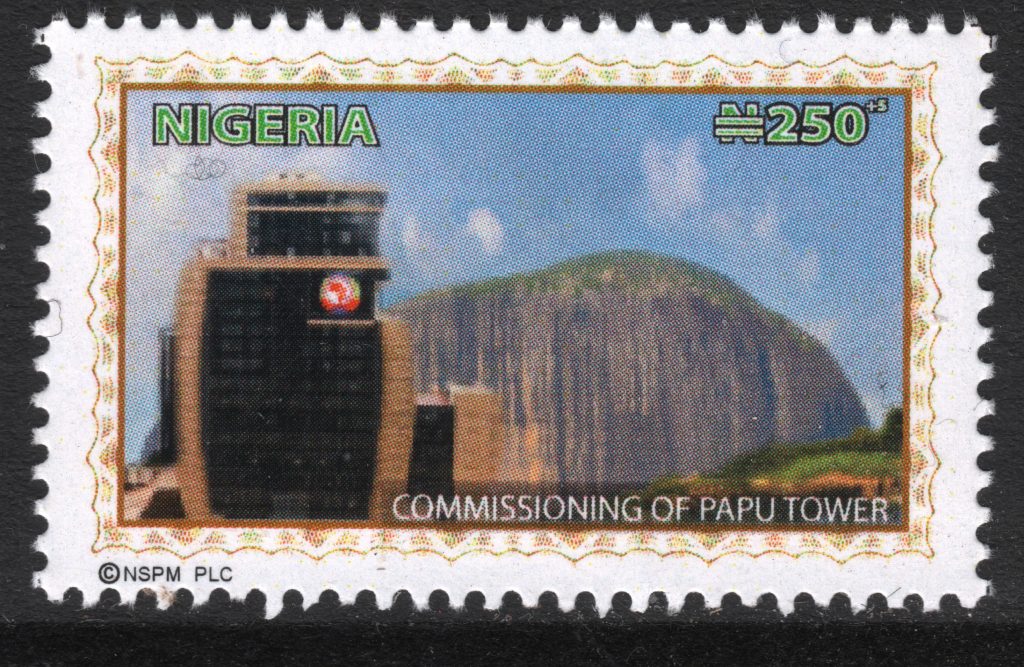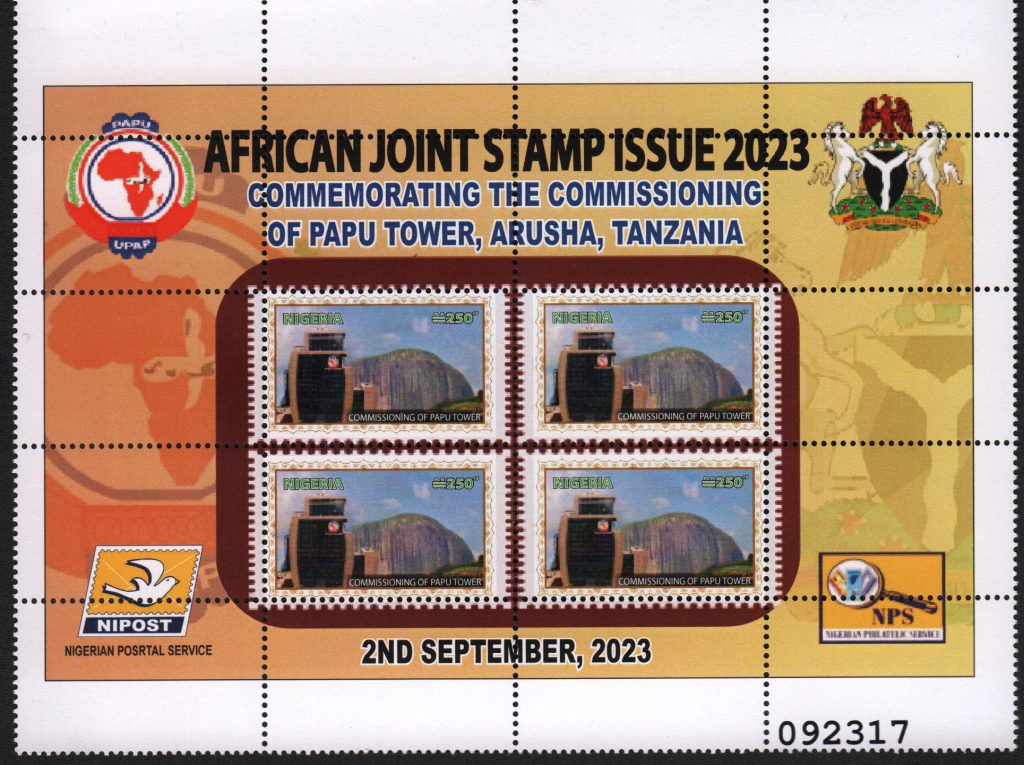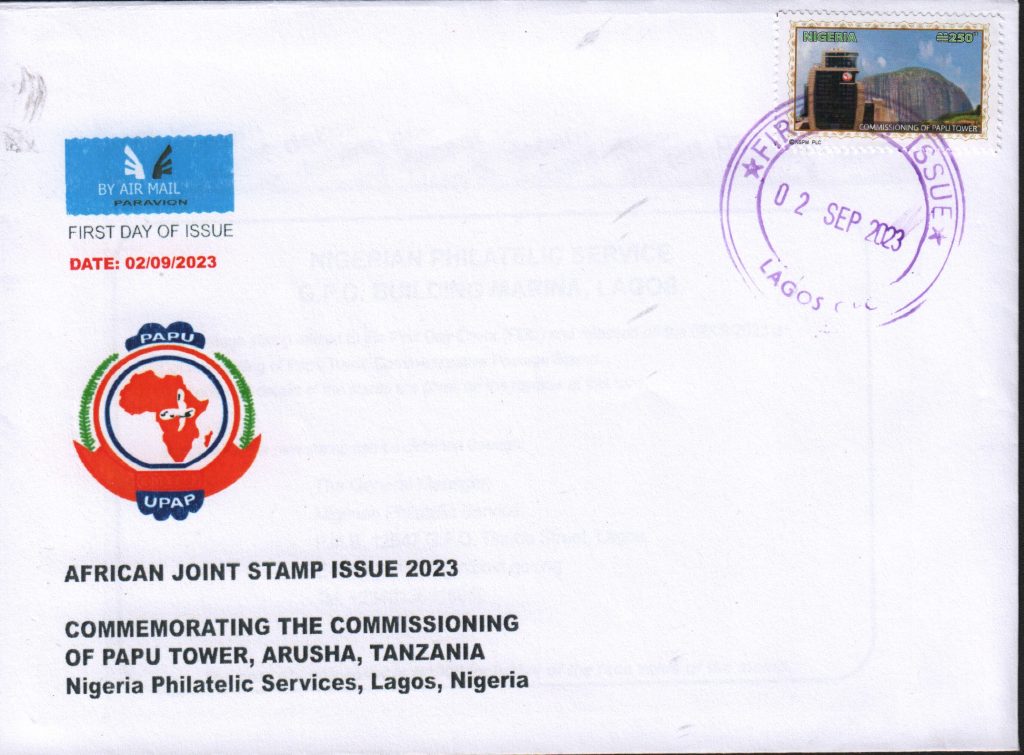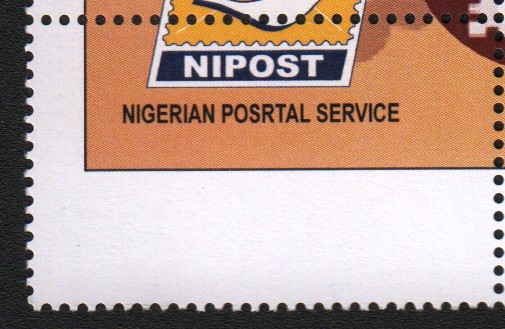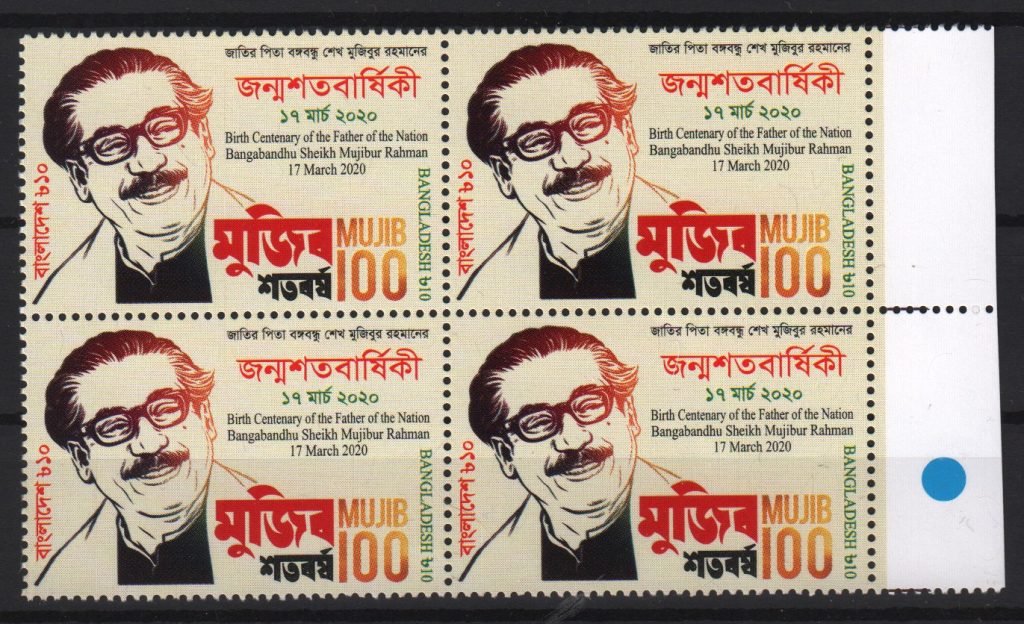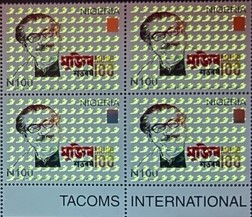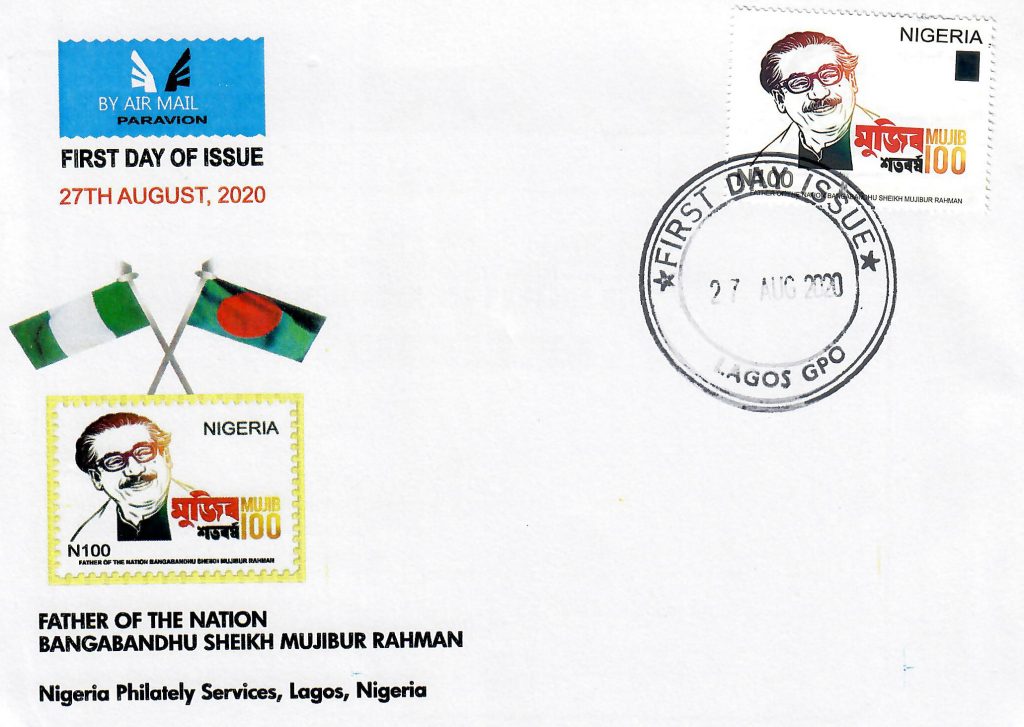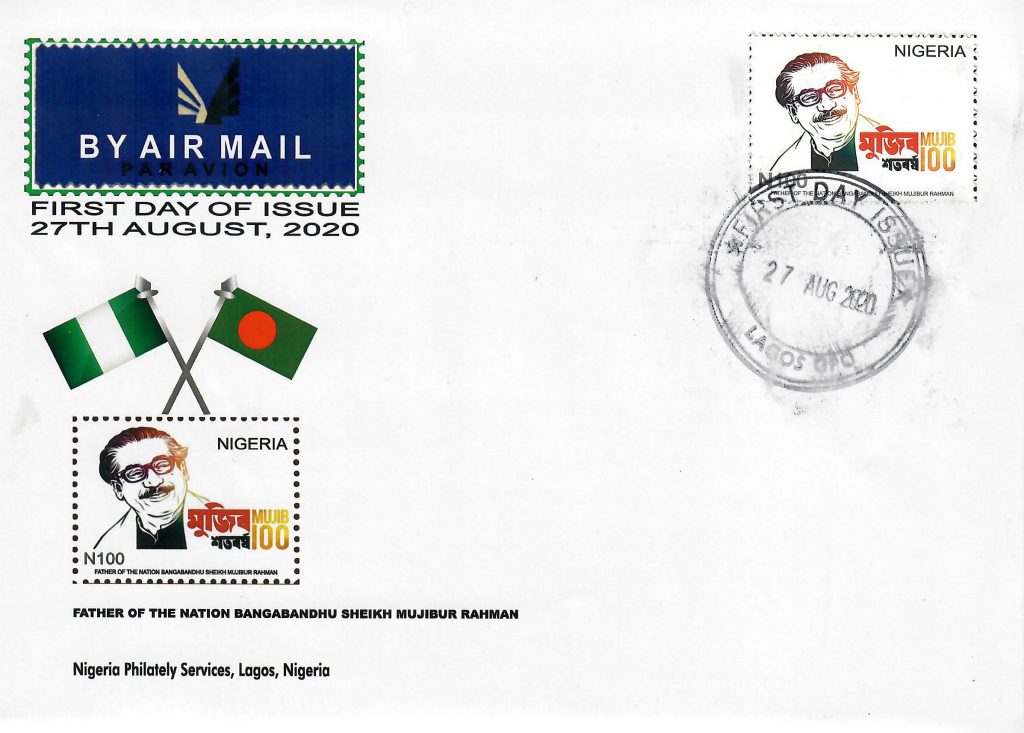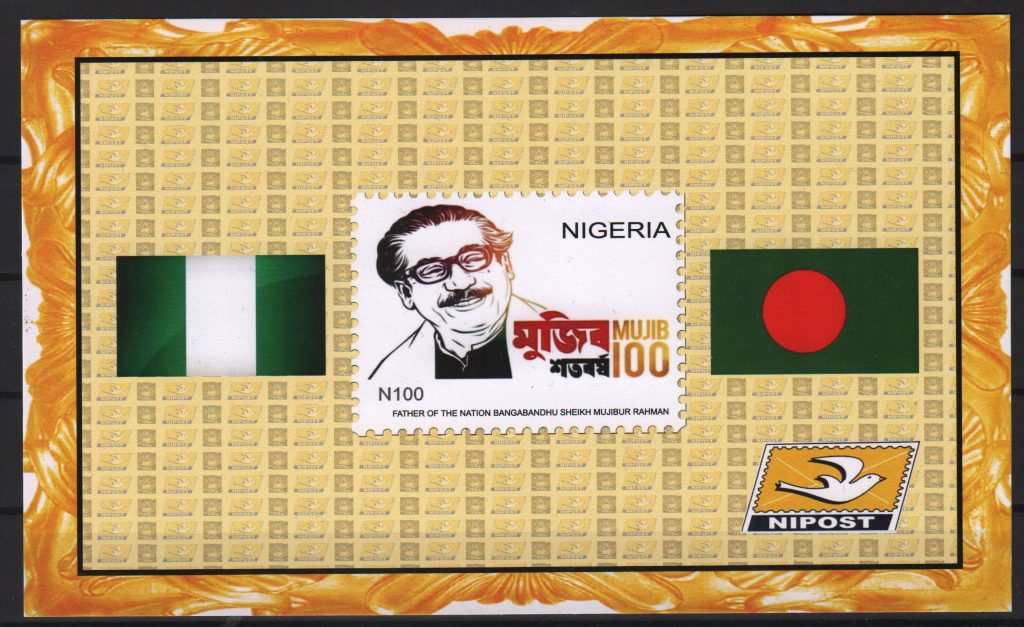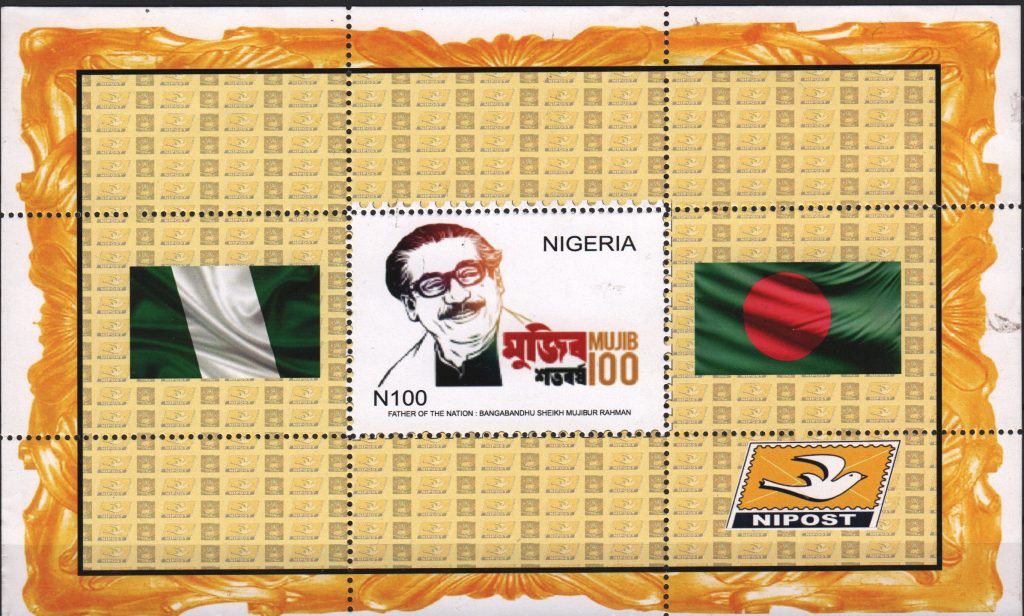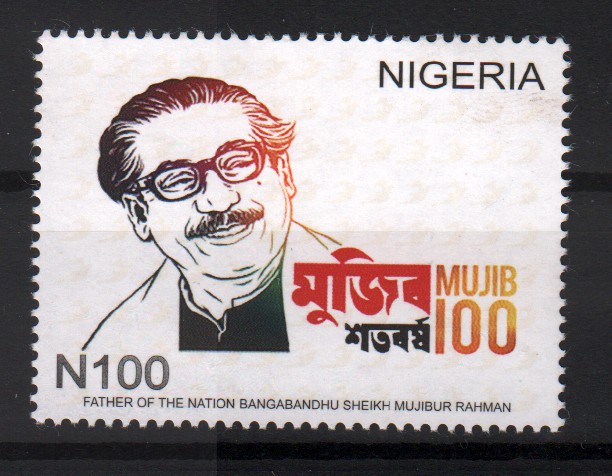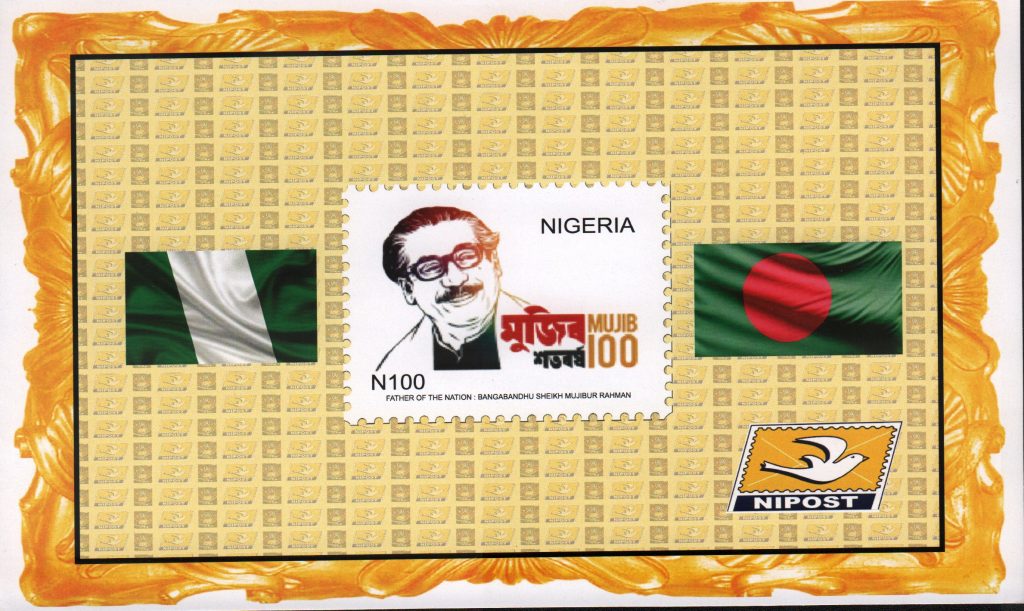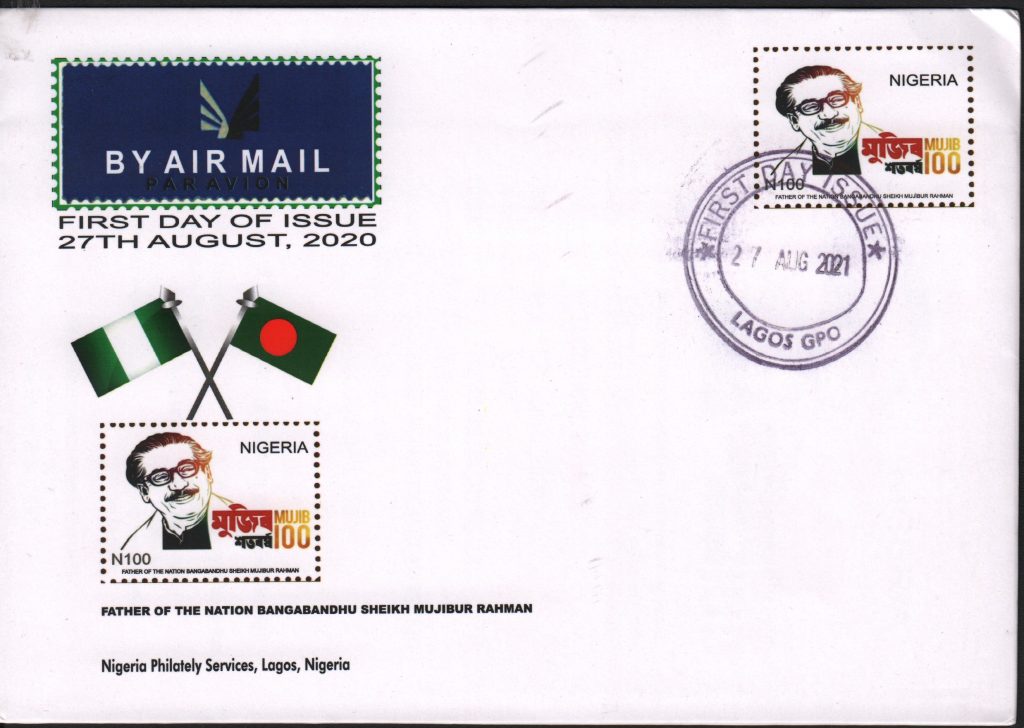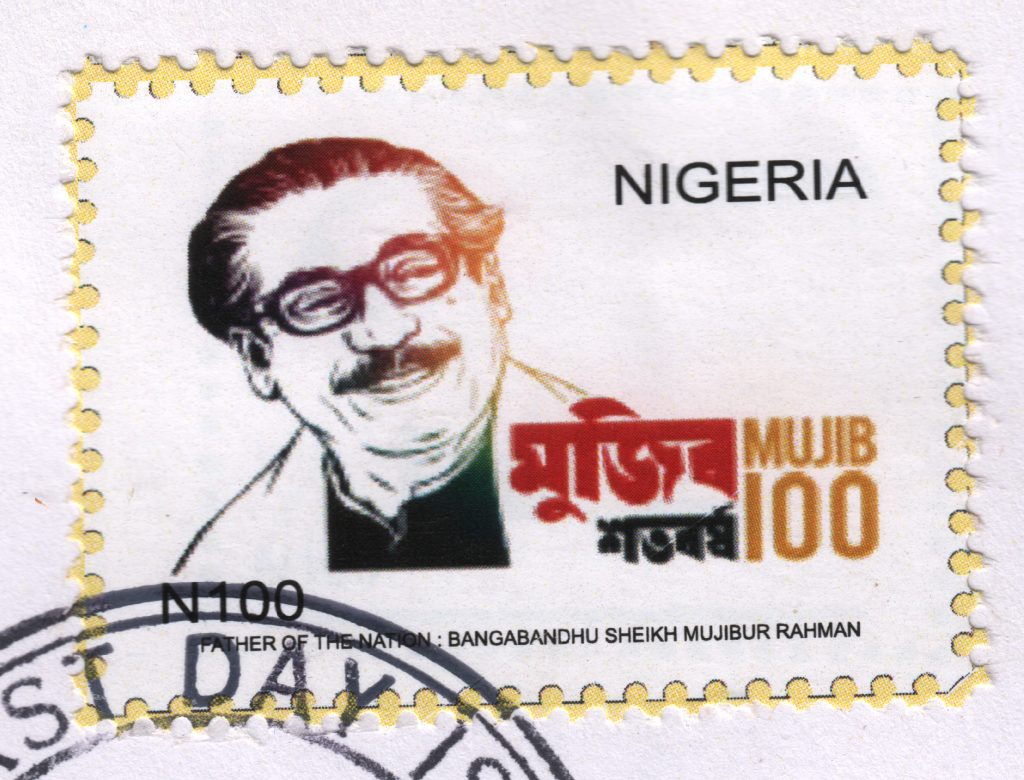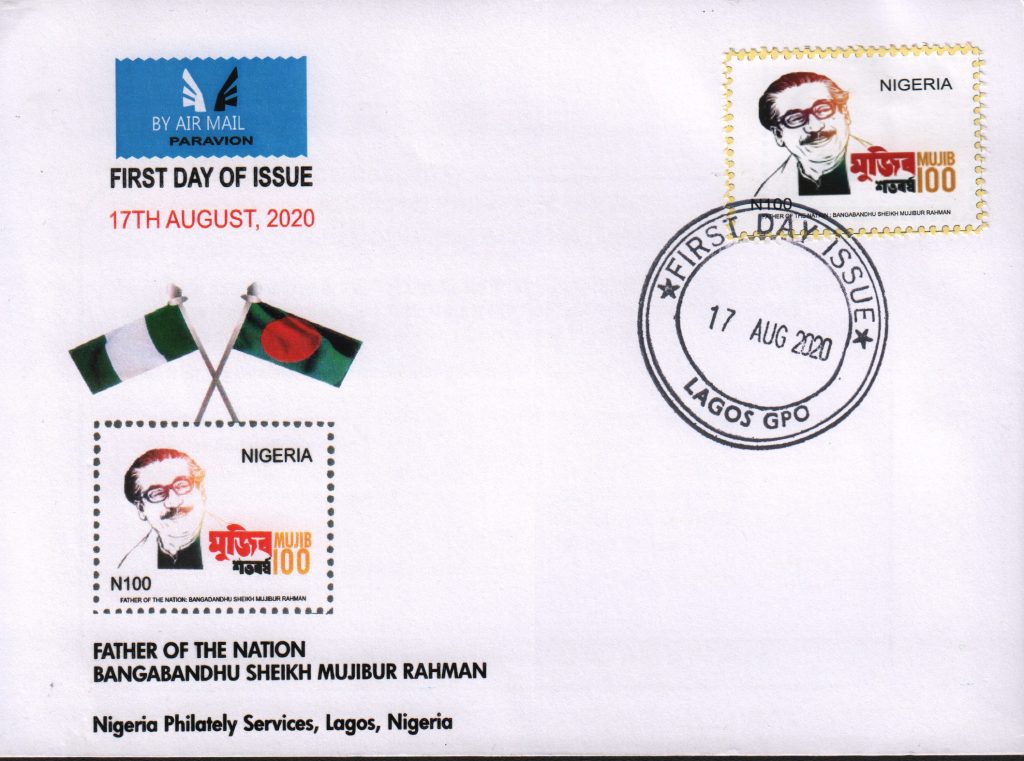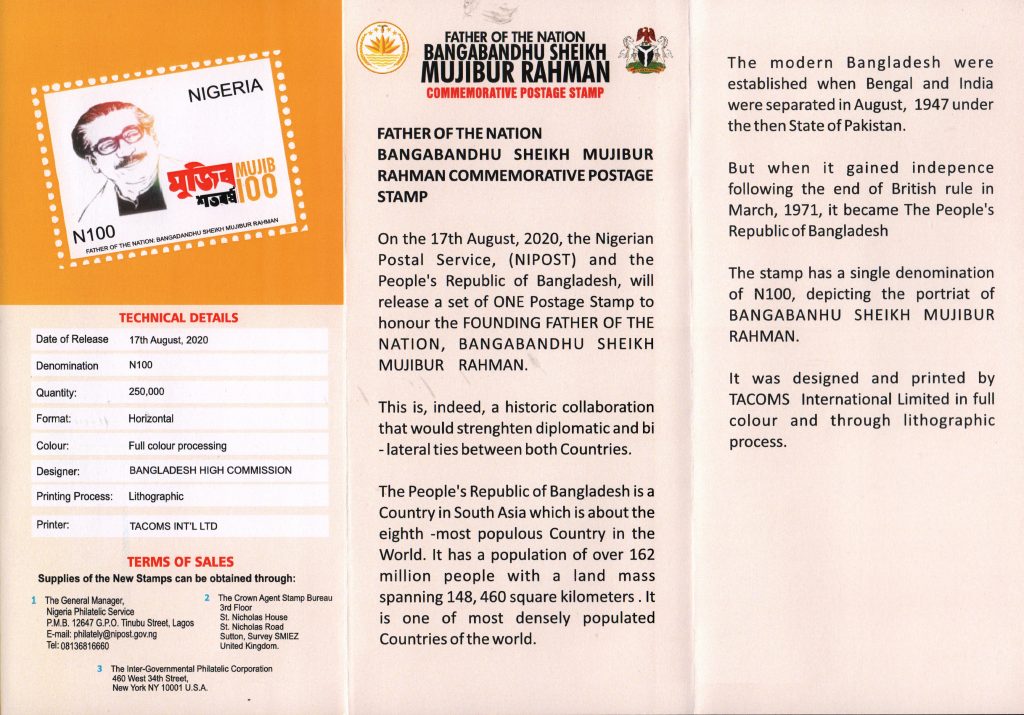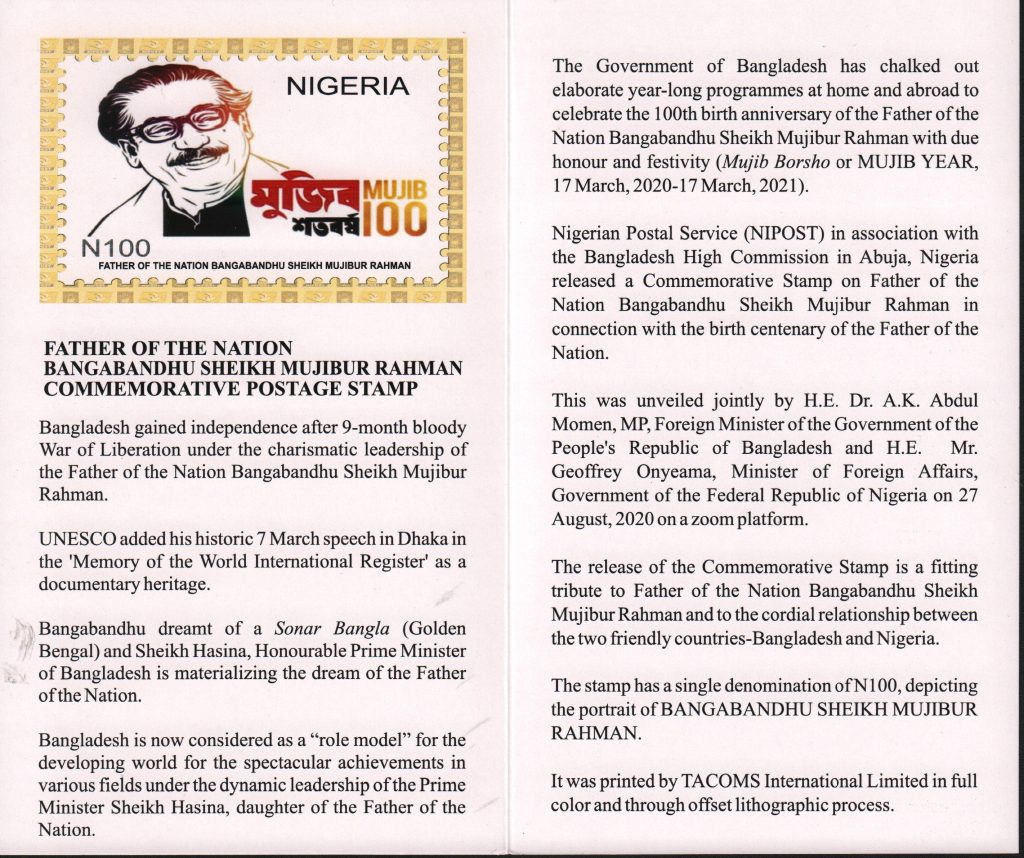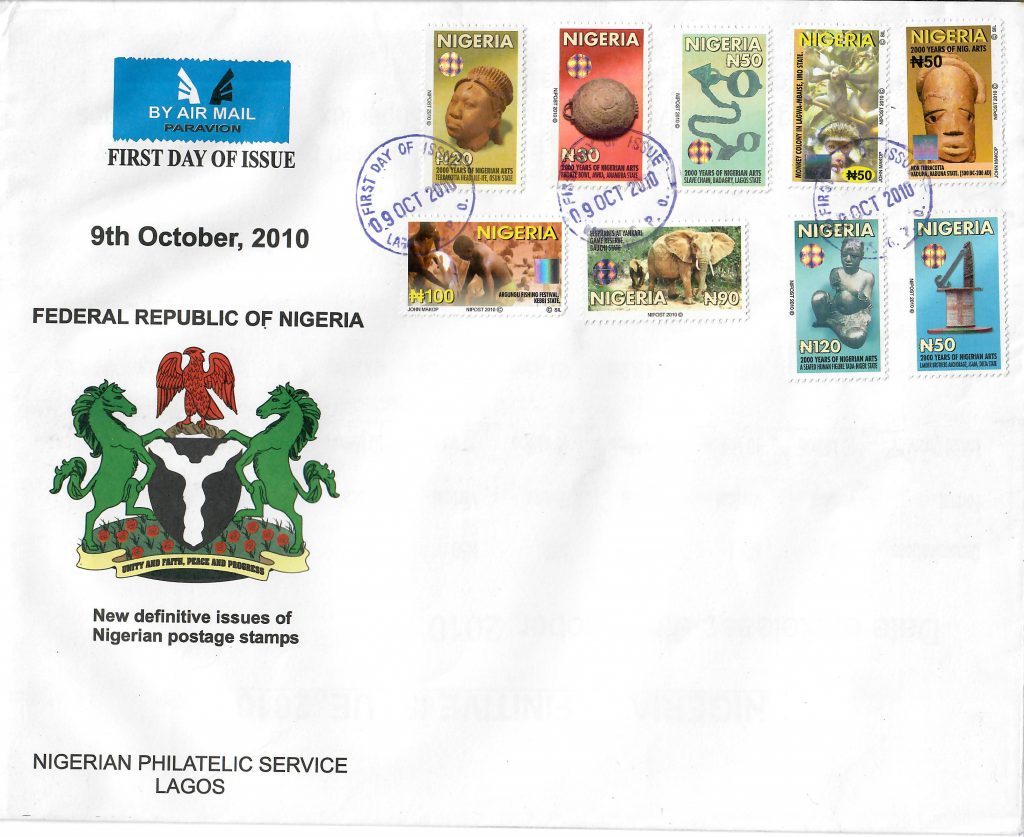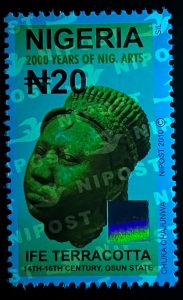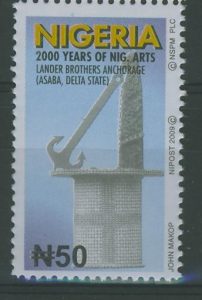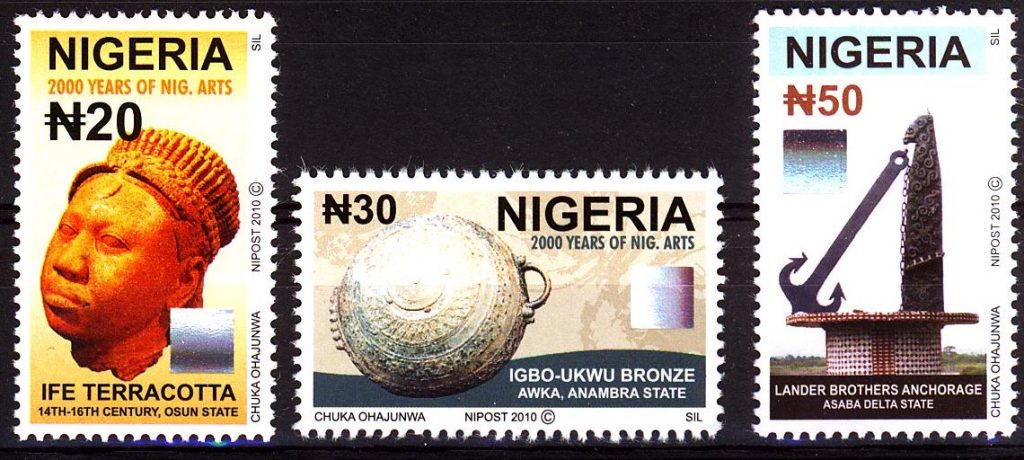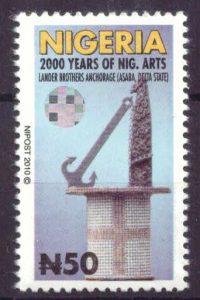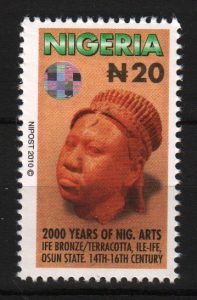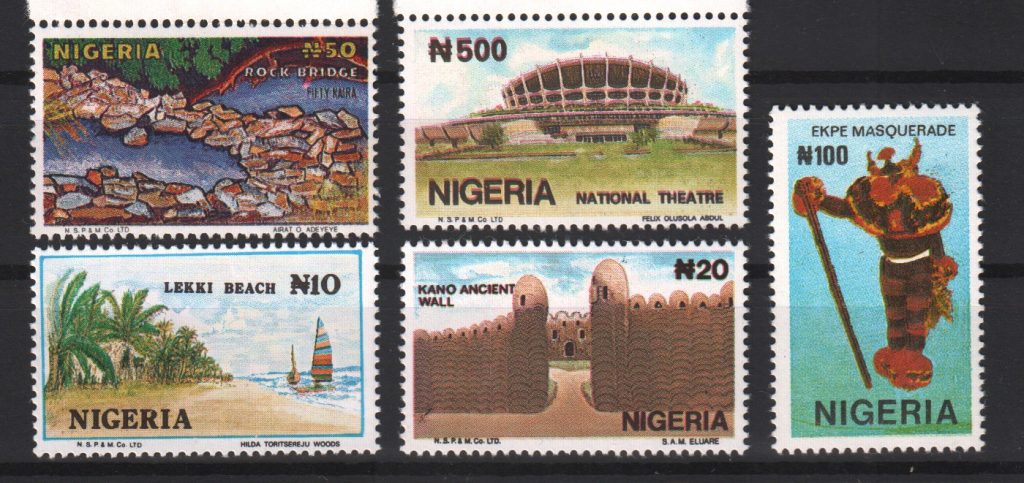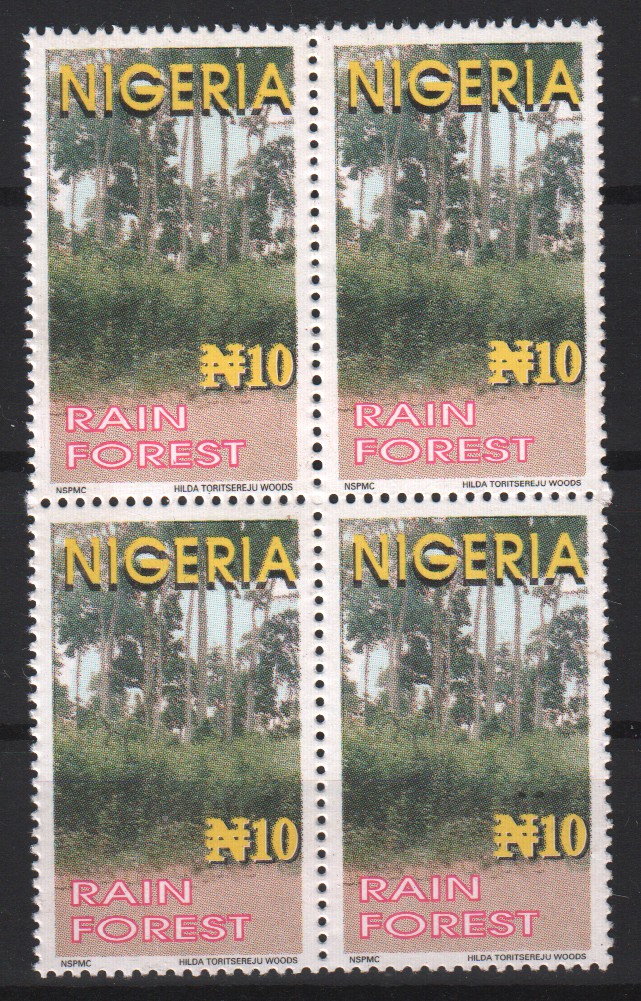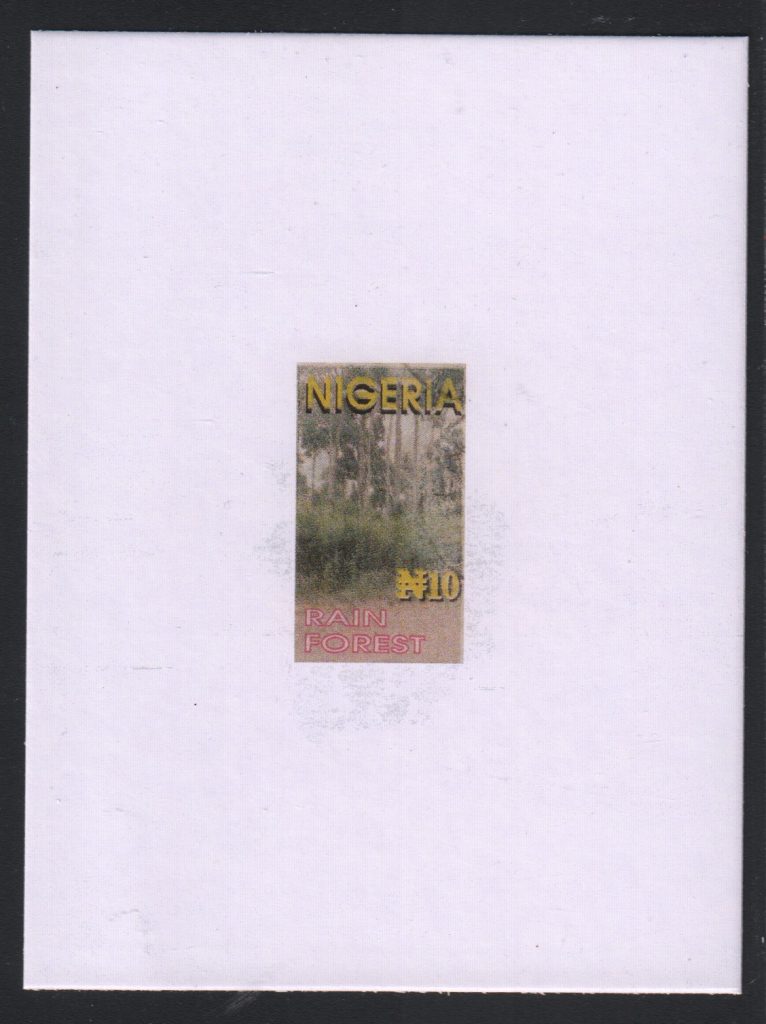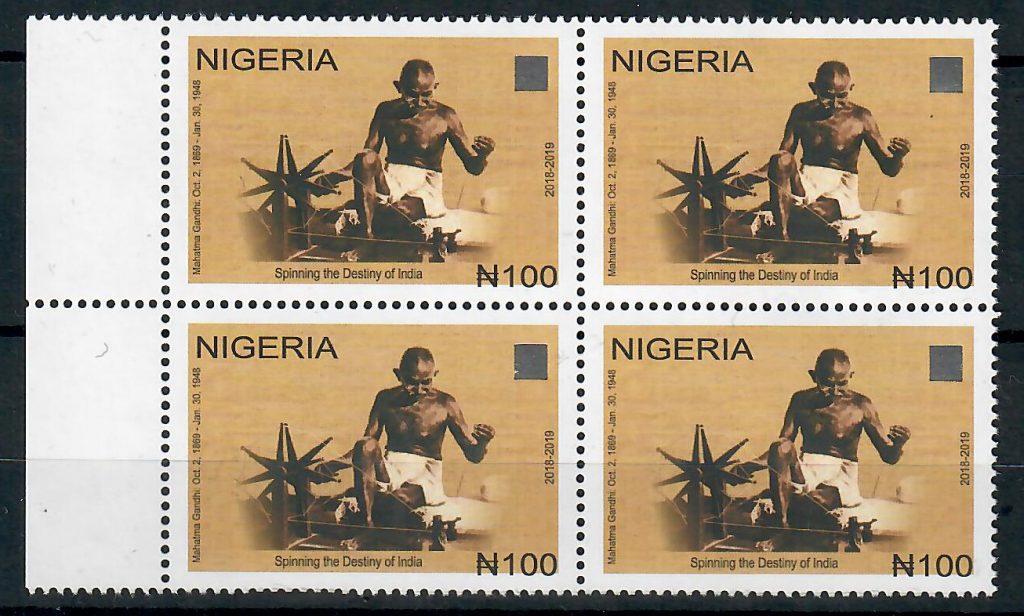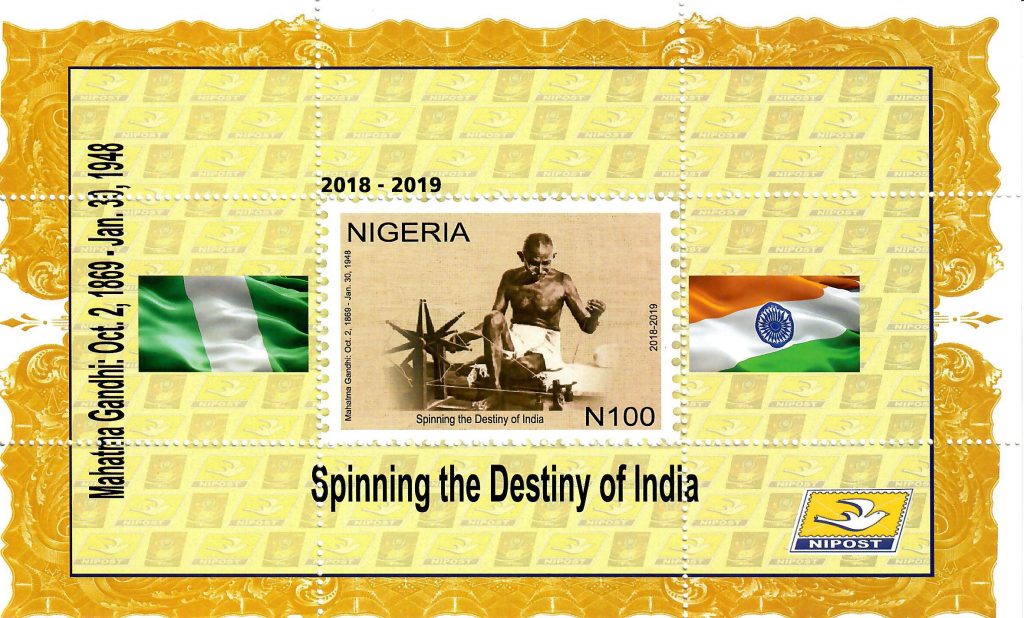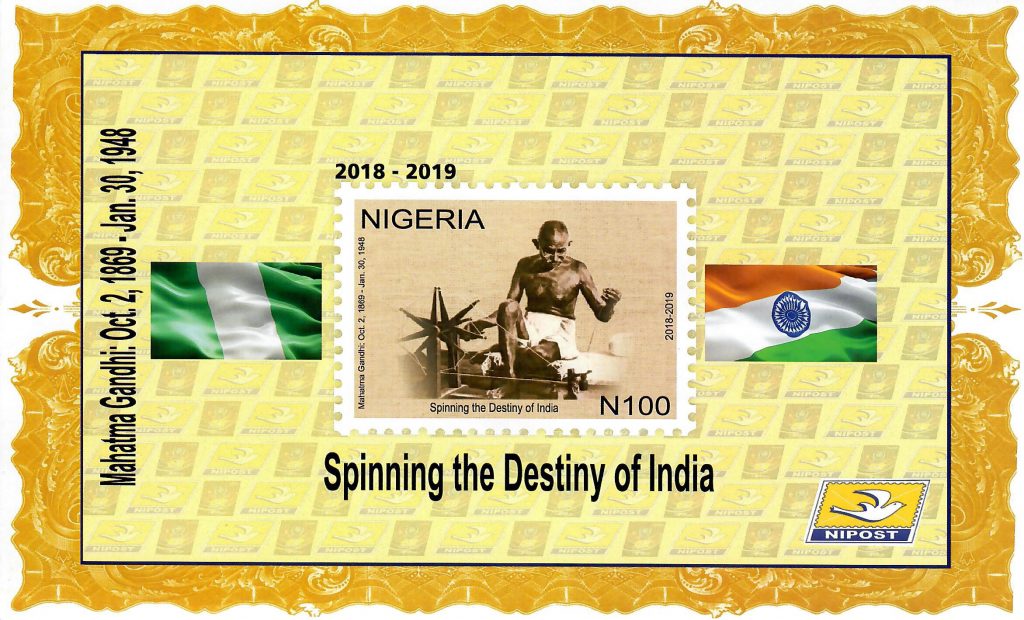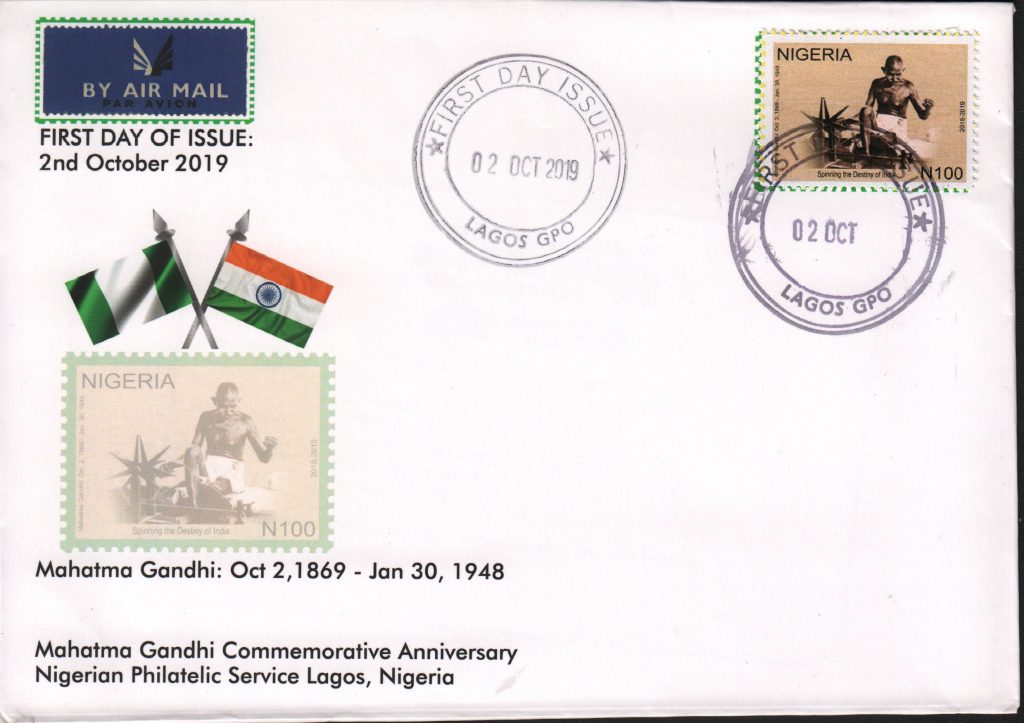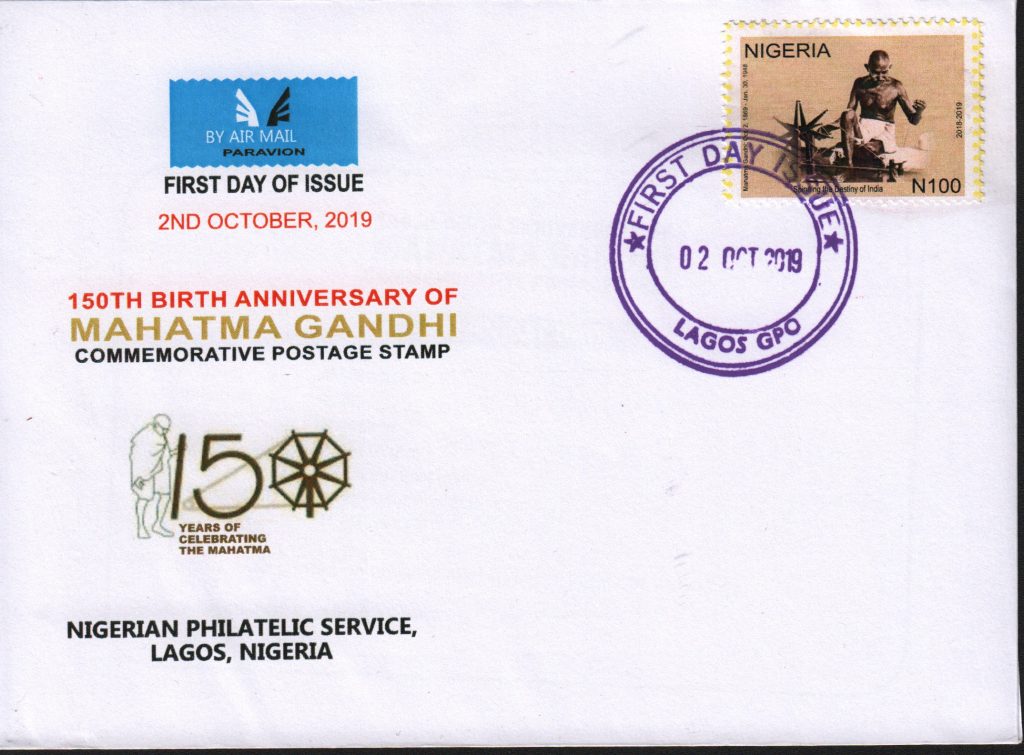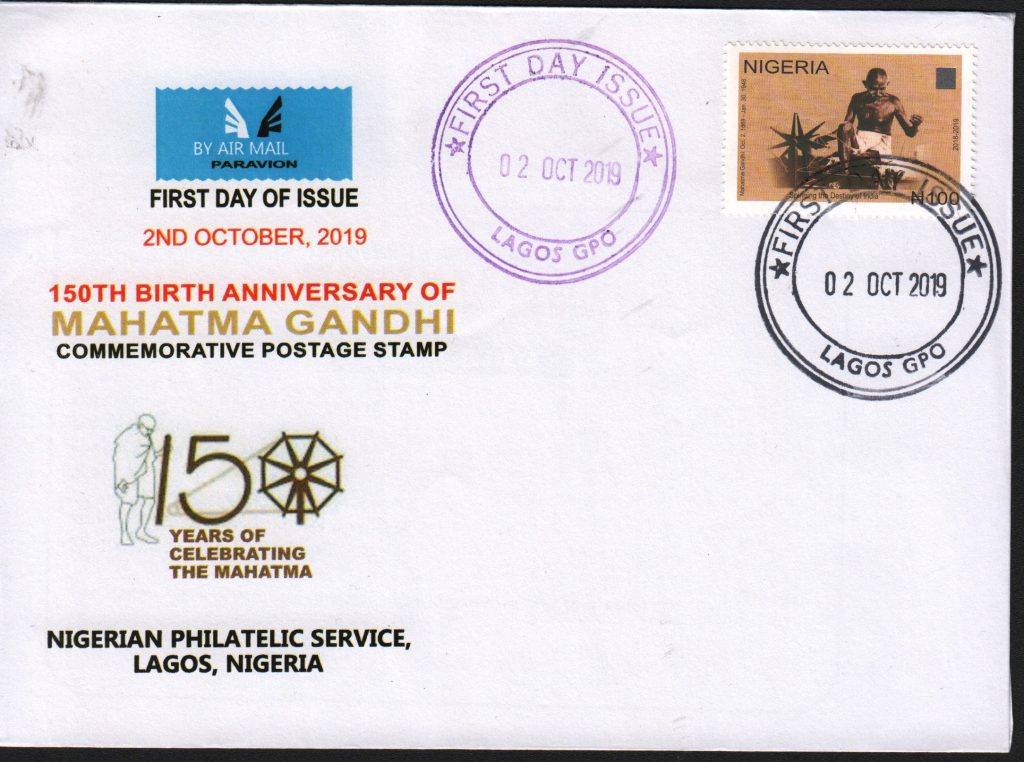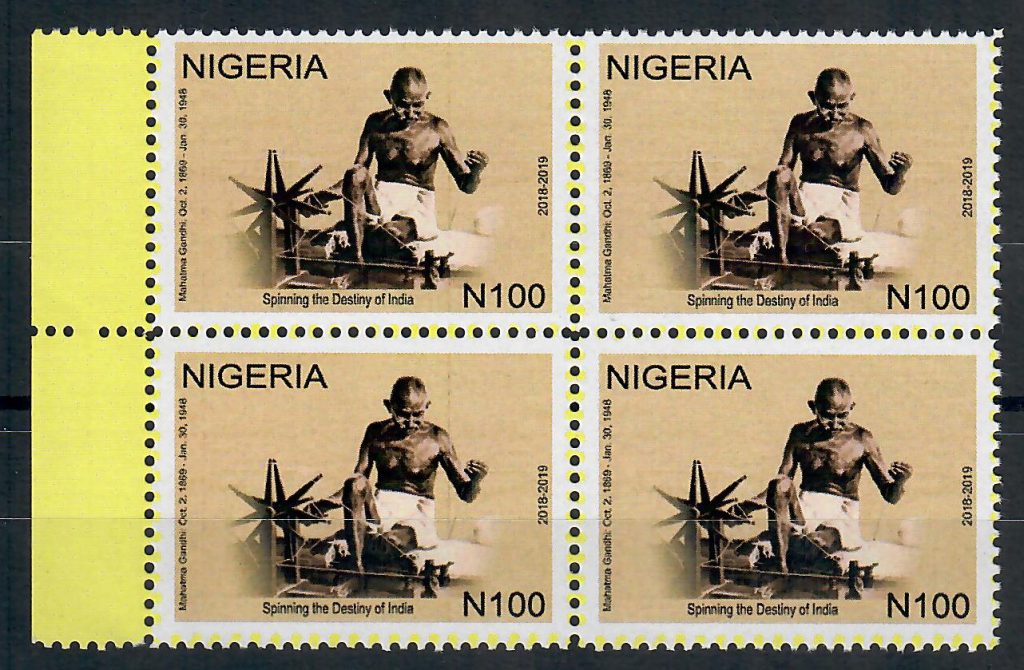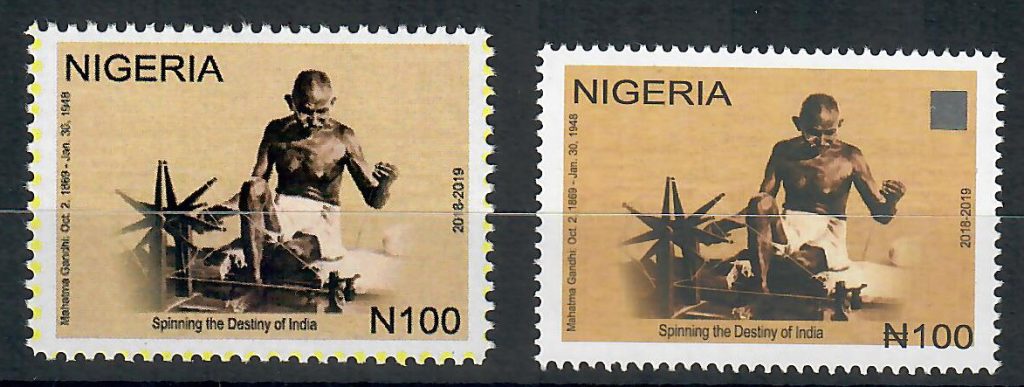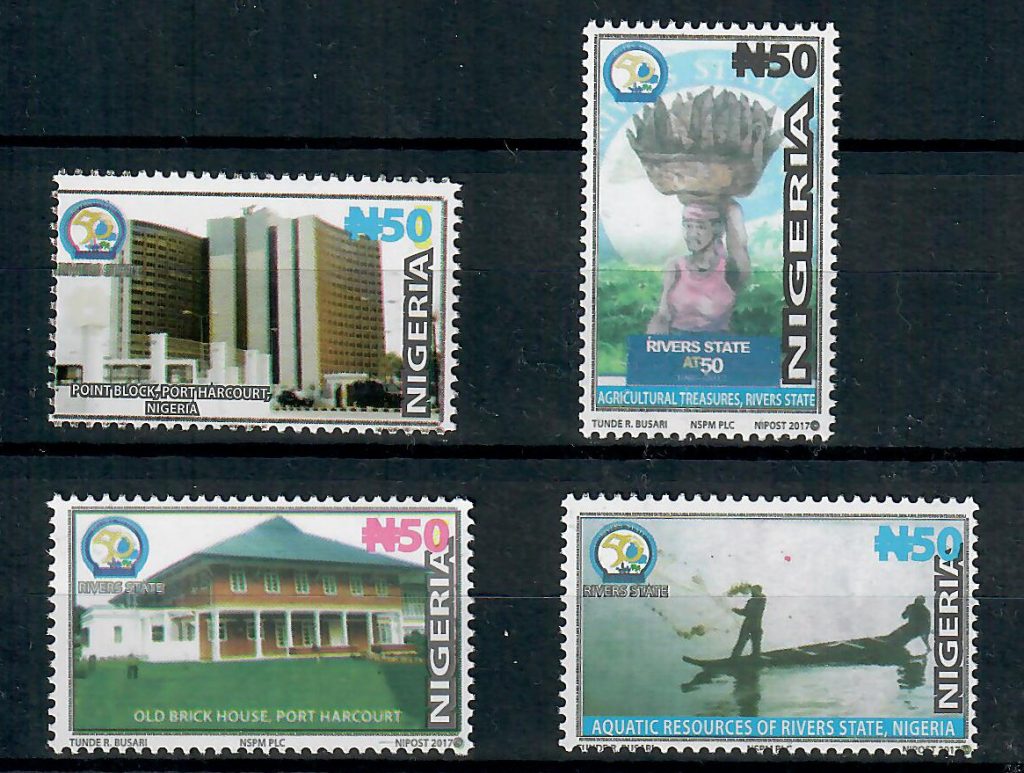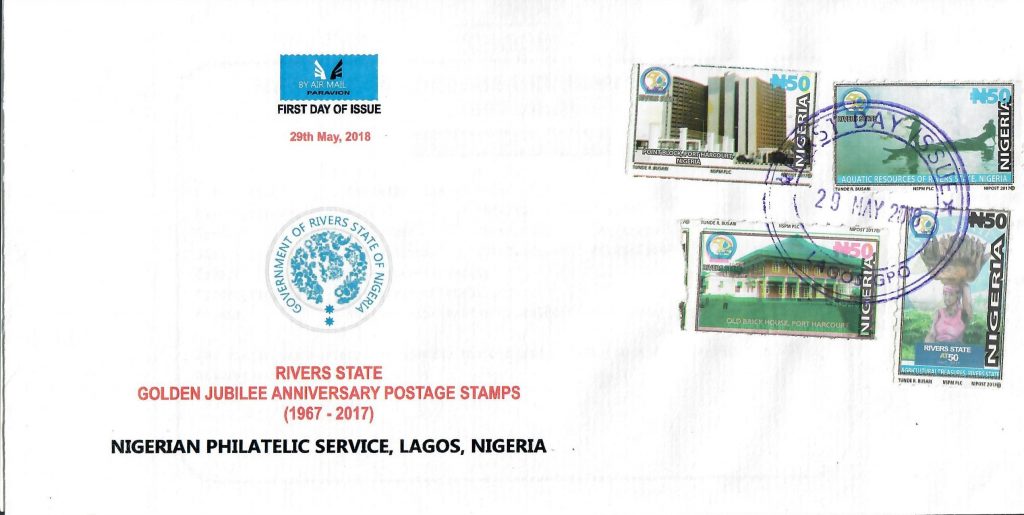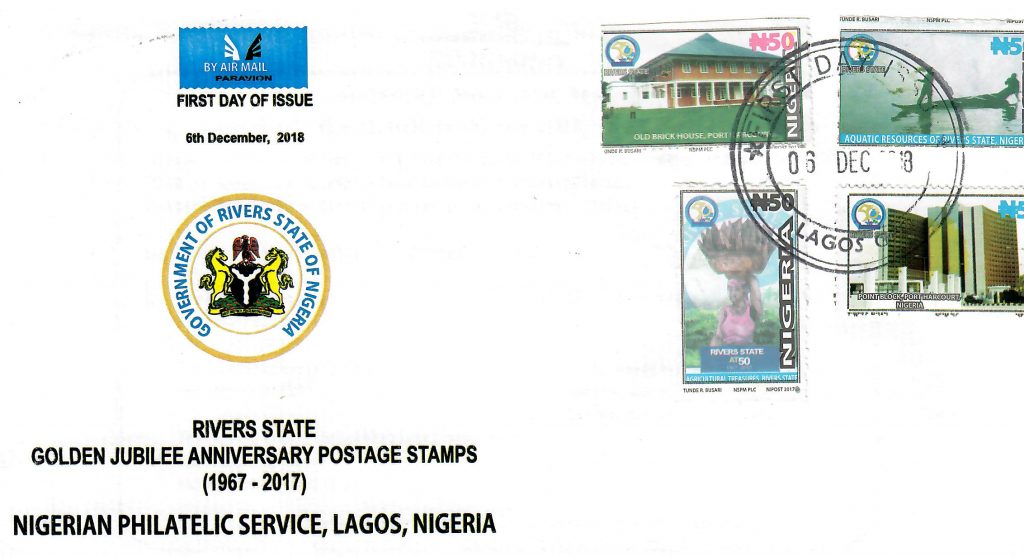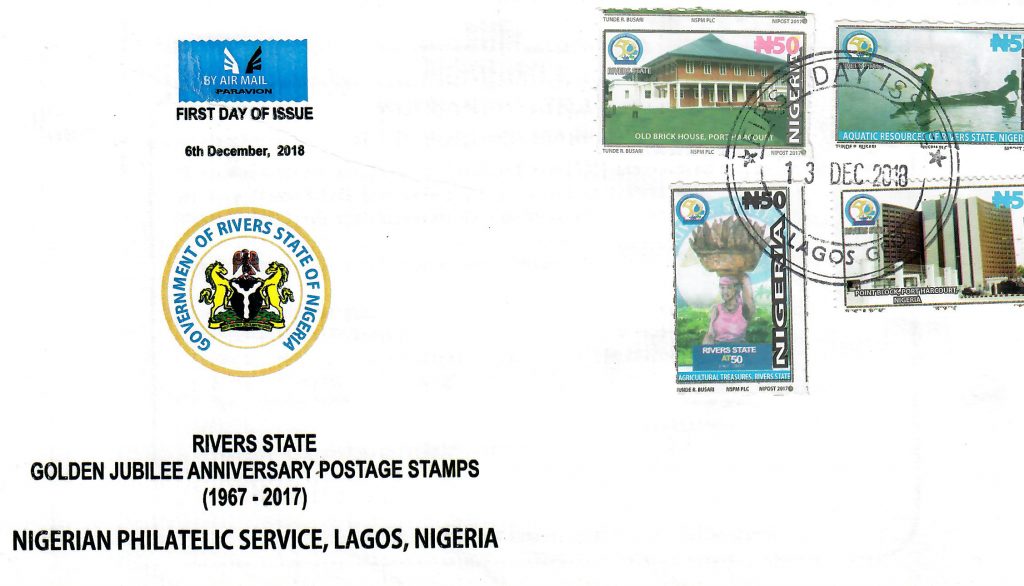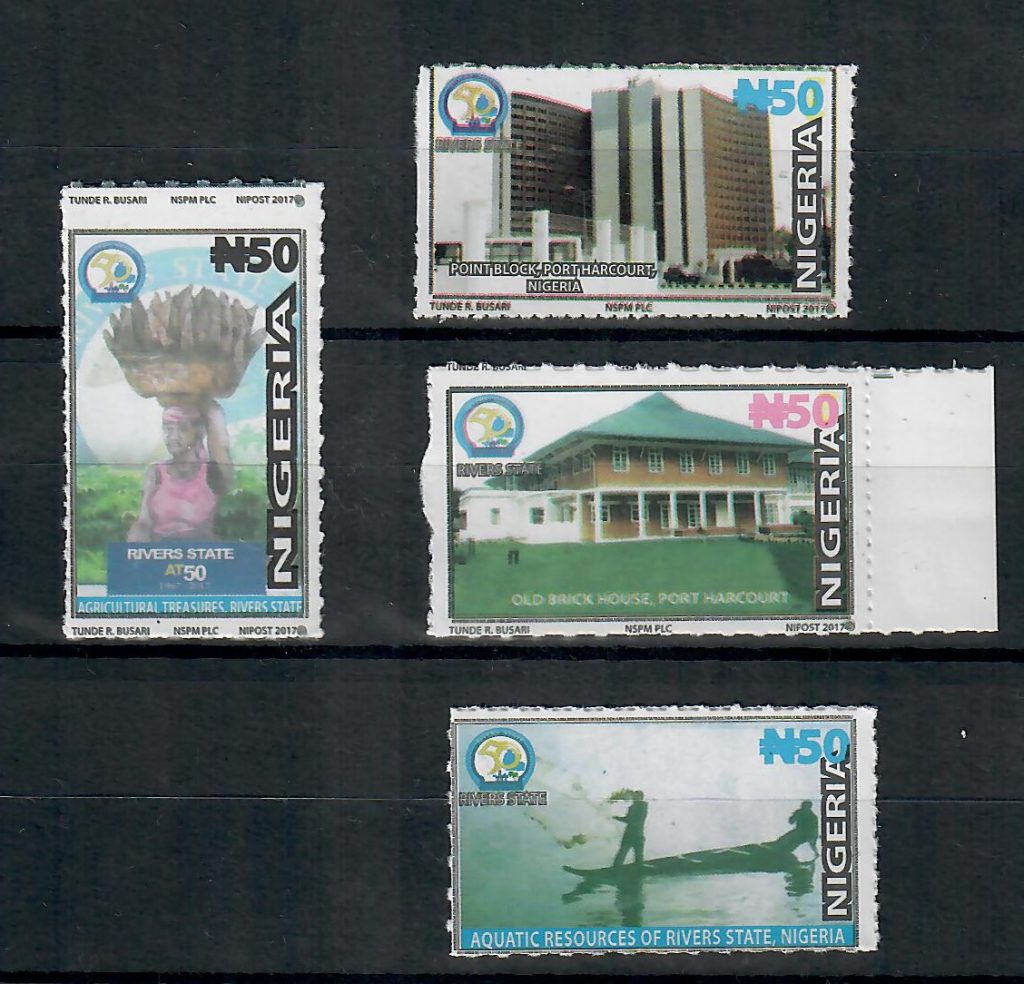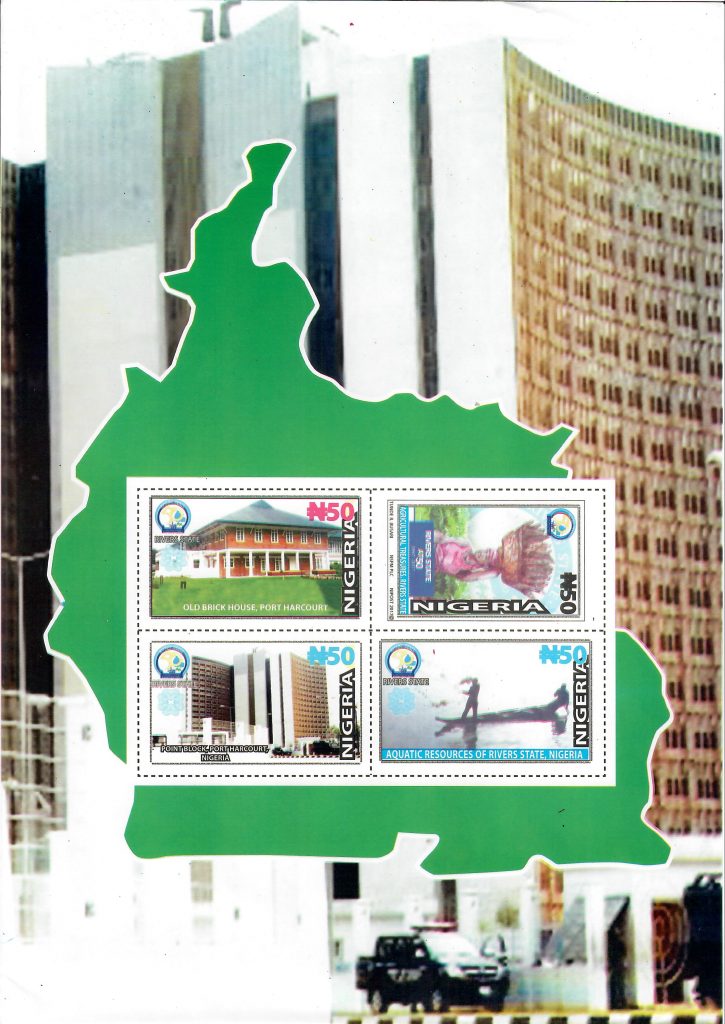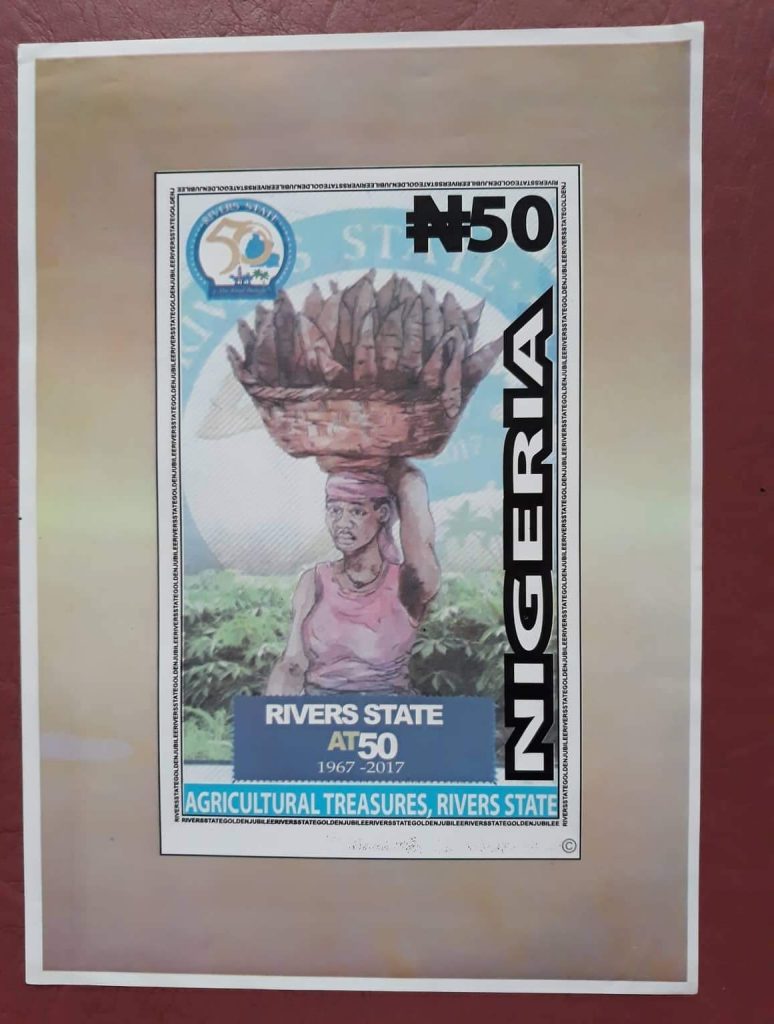Personally, I always like it when Nigeria issues a new Definitive set. Supposedly this occurs every 10 years, but there is no strict adherence to this guideline. During the lifespan of a Definitive issue, typically there are unannounced additional values or printings which make collecting almost like a sport.
The official release of the new set was 17th October 2024. 8 stamps were issued, to highlight 2 distinct UNESCO Heritage Sites within Nigeria, the Osun-Osogbo Sacred Grove site, and the Sukur Cultural Landscape site.
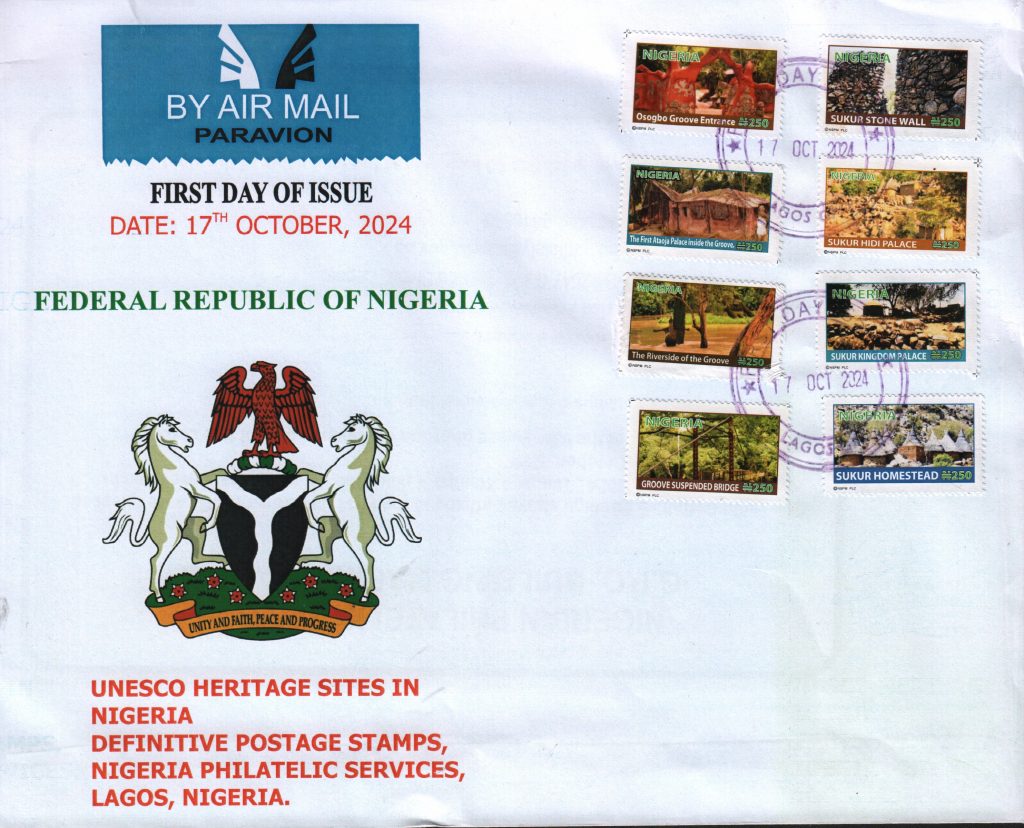
Osun-Osogbo Sacred Grove is situated on the outskirts of Osogbo, the capital of Osun State.
It is a sacred grove and one of the last remnants of primary high forest in southern Nigeria. It is regarded as the abode of the goddess Osun, one of the pantheons of Yoruba gods.
The grove is dotted with sanctuaries, shrines, sculptures, and artworks dedicated to Osun and other deities.
It also includes two palaces, five sacred places, and nine worship points along the riverbanks.
The grove is a symbol of identity for the Yoruba people and is a testament to the once widespread practice of establishing sacred groves outside settlements.
The Osun-Osogbo Festival, celebrated annually in August, attracts thousands of worshippers, spectators, and tourists from around the world.
The festival has a history of over 700 years and includes traditional cleansing of the city and cultural reunion with ancestors.

The Sukur Cultural Landscape is another UNESCO World Heritage Site located in Adamawa State.
It is situated on a hill above the village of Sukur in the Mandara Mountains, near the border with Cameroon.
It was inscribed in 1999 based on its cultural heritage, material culture, and naturally terraced fields.
It is Africa’s first cultural landscape to receive World Heritage List inscription.
It features a Hilltop Settlement, which includes the palace of the Hidi (chief), which is a circular structure built from local granite.
The landscape features naturally-terraced fields used for agriculture.
The site has relics of iron smelting technology, including furnaces, ore, and grindstones.
The lower ground has villages with mud-walled houses, wells, and terraced agricultural fields with ritual significance.
The site has a recorded history of iron smelting technology, flourishing trade, and strong political institutions dating back to the 16th century.

The stamps are produced by the Nigerian Security Minting and Printing Company, in sheets of 50.
Unlike the previous Definitive set, there are no visible security features to the stamps. Strangely, all stamps have the same value, N250 which in my mind defeats the purpose of issuing definitives, especially as that is the rate for internal mail. With the rising costs in Nigeria, you would need one and half sets to cover the postage of a standard letter to Europe, so not very practical.
I’m hoping this is just the initial release with hopefully more UNESCO sites to be featured on higher denominations in the near future.
